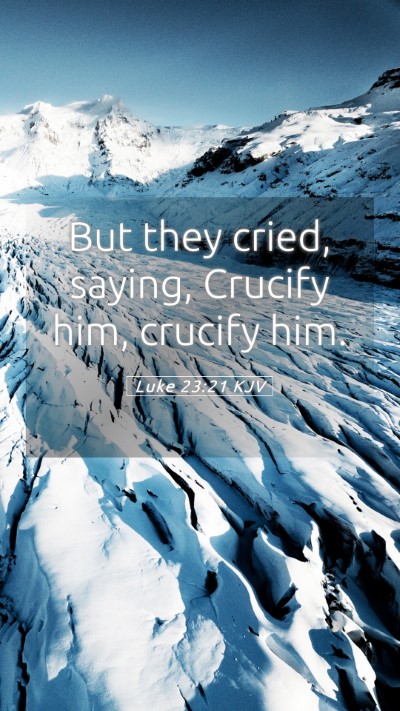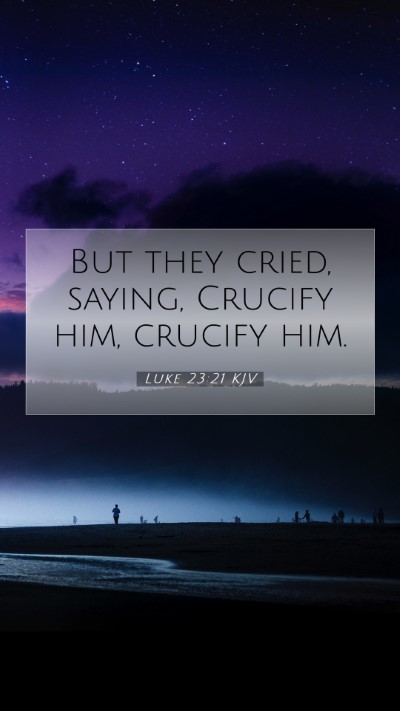Understanding Luke 23:21: A Comprehensive Bible Verse Commentary
Luke 23:21 states: "But they cried out, 'Crucify Him! Crucify Him!'" This verse captures a pivotal moment in the passion narrative, showcasing the contrast between Jesus' innocence and the crowd's vehement demand for His crucifixion. The rich theological implications of this moment are examined below through the lens of renowned public domain commentaries.
Contextual Overview
This verse occurs during the trial of Jesus before Pilate, where the Jewish leaders sought to persuade the Roman governor to execute Jesus. The crowd's outcry demonstrates a collective rejection of Jesus as the Messiah, and it serves as a stark reminder of humanity's propensity for sin.
Commentary Insights
-
Matthew Henry's Commentary
Henry emphasizes the gravity of the crowd's decision, noting that their cries were fueled by envy and misinformation. Despite Pilate's attempts to release Jesus, the insistence of the people highlights the fulfillment of prophecy concerning the suffering of the Messiah.
-
Albert Barnes' Notes on the Bible
Barnes points out that the responses of the crowd reveal deep-seated animosity towards Jesus' ministry. He delves into the implications of the choice presented to the people, contrasting Jesus with Barabbas, and encapsulates the tragedy of choosing earthly power over divine truth.
-
Adam Clarke's Commentary
Clarke elaborates on the historical context, mentioning the role of the Pharisees in inciting the crowd against Jesus. He reflects on the spiritual blindness of those present, illustrating how this moment reflects the deeper truth about humanity's nature and need for redemption.
Theological Significance
This verse underscores several theological themes important for Bible verse understanding:
- Human Responsibility: The decision made by the crowd signifies humanity's collective responsibility in sin, showcasing how societal pressures can lead to moral corruption.
- Prophetic Fulfillment: Jesus' crucifixion was foretold in Old Testament prophecies, and this moment reflects the predestined plan of salvation initiated by God.
- Redemption through Rejection: Ironically, the very act of crucifixion that was meant to eliminate Jesus is the means of redemption for humanity, highlighting the paradox of grace.
Application and Reflection
As you study this verse, consider the following:
- How do societal influences affect your understanding and acceptance of truth?
- In what ways can you identify and resist the pressures that lead to the rejection of faith?
- Reflect on how Jesus’ rejection led to His sacrificial love and what that means for your life today.
Cross-References
This verse connects with several other scripture passages that illuminate its meaning:
- Matthew 27:21-23: The demand for Barabbas, highlighting the choice between sin and salvation.
- Isaiah 53:3: Prophecy concerning Jesus being despised and rejected by men.
- John 19:15: The further rejection of Jesus by the crowd before His crucifixion.
Conclusion
Luke 23:21 serves as a poignant reminder of the depths of human sinfulness and the heights of divine grace. By understanding this verse within its context and through the analyses of noted commentators, believers can gain profound insights into the nature of rejection, the fulfillment of prophecy, and the ultimate act of redemption that flows from it.
This comprehensive exploration of Luke 23:21 invites further reflection and study, providing a rich tapestry of understanding for those seeking Bible verse explanations and deeper insights into the teachings of Christ.


